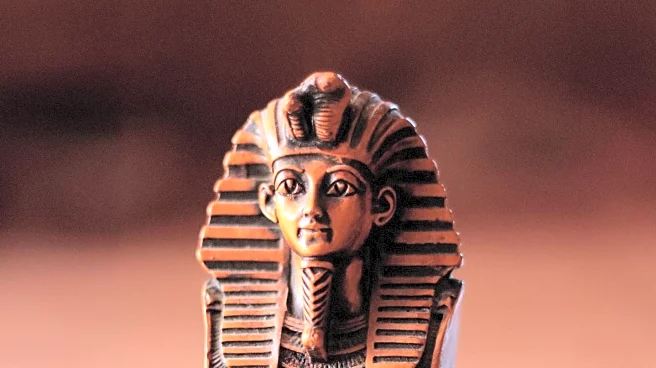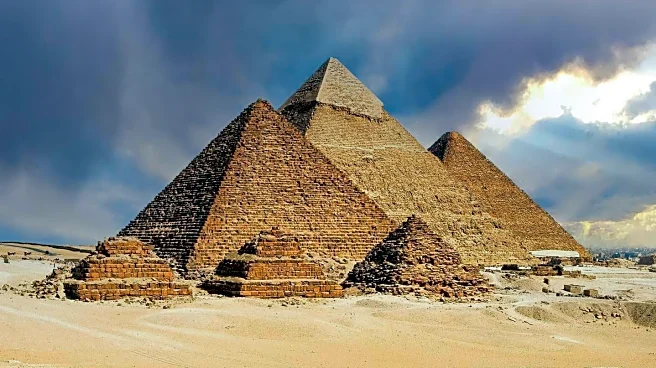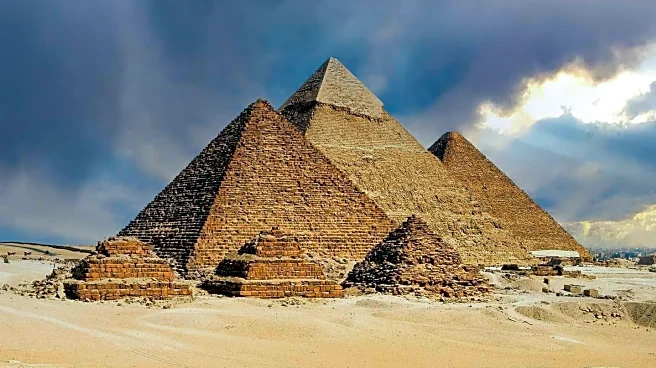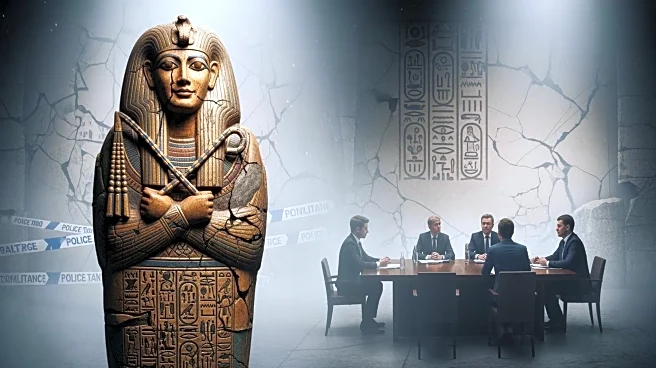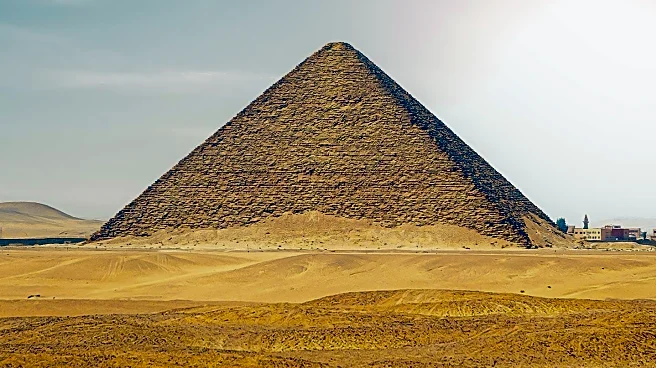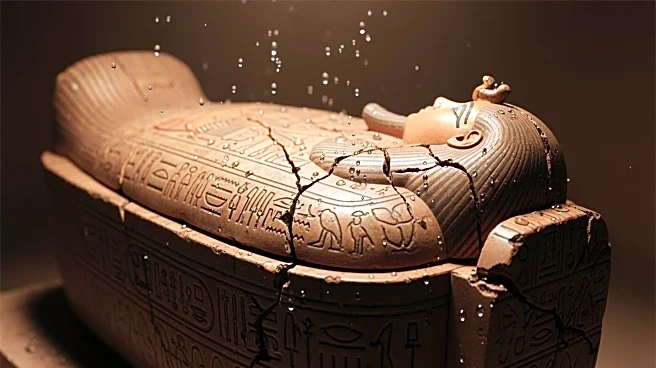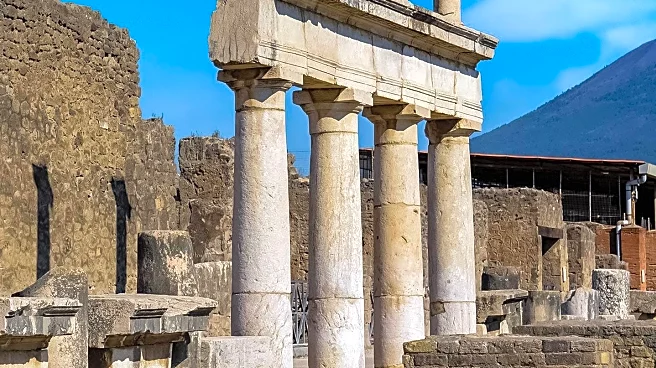What's Happening?
A new study has revealed that the tomb of Egyptian pharaoh Tutankhamun is at risk of collapse due to structural damage caused by climate change. The study, led by Sayed Hemeda from Cairo University, highlights
ceiling cracks and fungal outbreaks as major threats to the tomb's integrity. The damage is linked to flash floods and rising humidity levels, which have weakened the surrounding limestone and shale. Preservationists are urging immediate action to reinforce the tomb and control moisture levels to prevent further deterioration. The tomb, discovered in 1922, is one of the most famous archaeological sites but is considered poorly preserved.
Why It's Important?
The potential collapse of King Tutankhamun's tomb poses a significant threat to cultural heritage and archaeological research. As one of the most iconic sites in Egypt, its preservation is crucial for historical studies and tourism. The study highlights the broader impact of climate change on cultural landmarks, emphasizing the need for proactive measures to protect such sites. The findings call for international collaboration in heritage conservation and climate adaptation strategies. The preservation of Tutankhamun's tomb is vital for Egypt's cultural identity and the global understanding of ancient civilizations.
